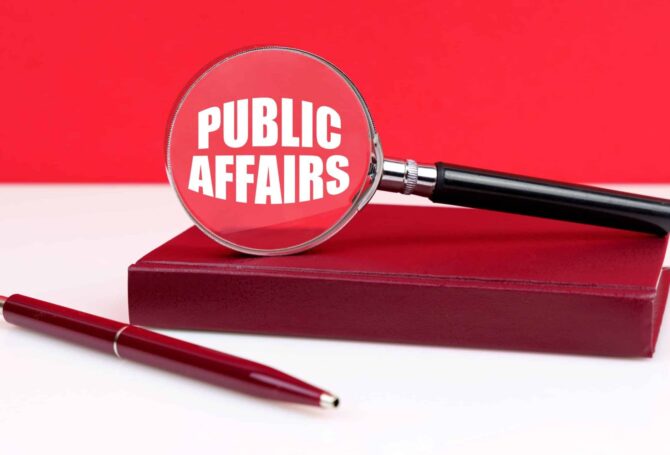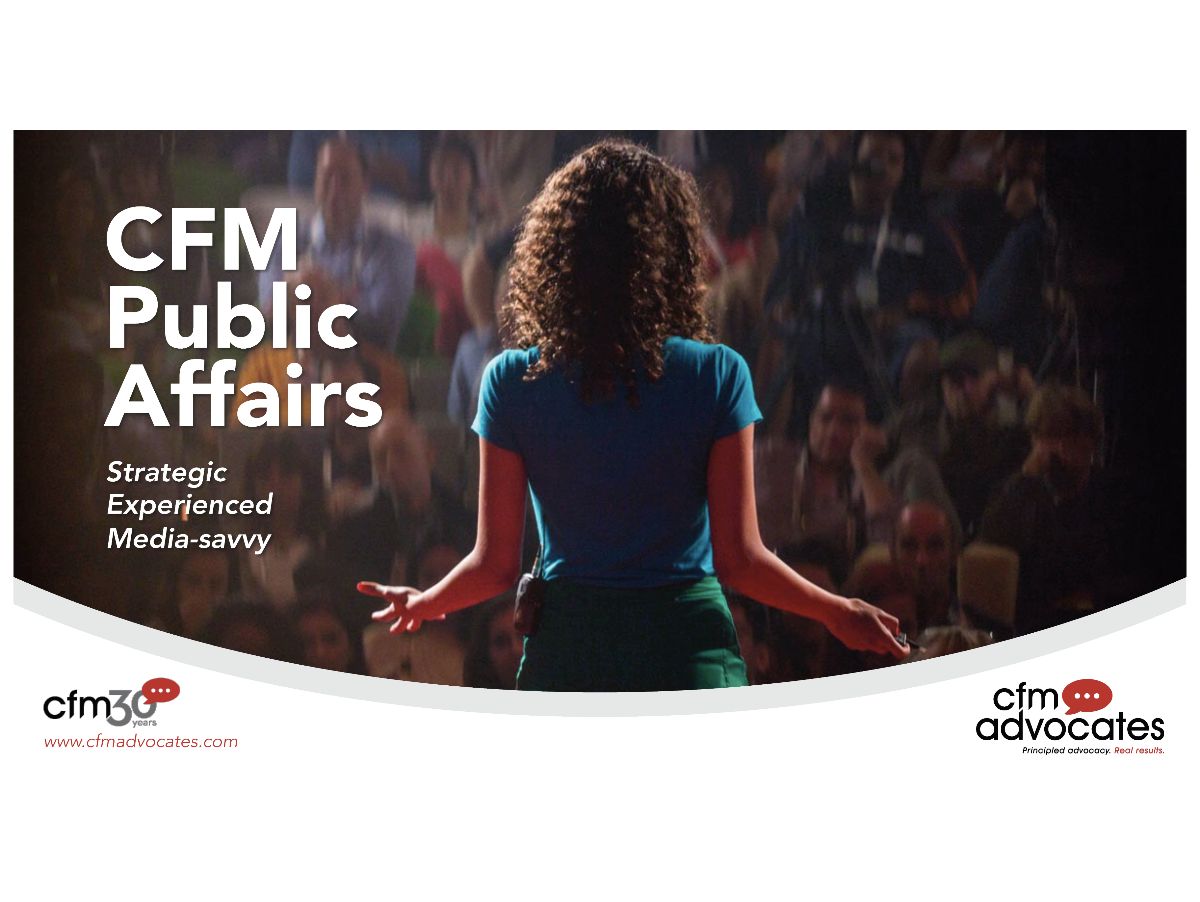
The Discipline Demands Facts, Arguments and Sharp Presentations
Public affairs is a discipline for good guys and for villains. Both have the right and the need to protect their reputation, make their case and attempt to influence outcomes.
Today’s good guy could become tomorrow’s villain, so the discipline of public affairs applies equally to the good and the bad – know your facts, key messages and best arguments, as well as the facts, key messages and best arguments of your opponents.
Preparation and anticipation are critical for public affairs success. Trying to buy success can and often does backfire.
There aren’t official referees in public affairs. However, there are codes of conduct for public affairs professionals that center on honesty and integrity. The credibility of public affairs professionals should be their calling card, even for perceived villains.
 Who Are Public Affairs Professionals
Who Are Public Affairs Professionals
The public affairs profession includes men and women in governmental affairs, issue management and strategic communications. They typically have backgrounds and experience in law, politics or communications. They understand how government officials tend to think and how governmental processes work, or at least how they were intended to work.
Public affairs professionals can be Democrats, Republicans or non-affiliated politically. They almost always have strong opinions, often based on personal experience, about government, politics and political figures. It goes with the job.
The macho stereotype of public affairs professionals has been shattered by the entrance of more women into the field. What remains true is that public affairs professionals thrive or fail by the quality of relationships they build.
Public Affairs Basics
Despite a deeply divided political environment, the basics of public affairs still apply. Good arguments, fairly presented, can be persuasive – and change votes or voter attitudes. A Republican lawmaker opposed to House Bill 2002 and its provisions relating to gender-affirming care changed his mind and his vote after learning more about what such care involves and why it’s needed. Advocates didn’t pressure him to change. They gave him reasons to change.
With federal and state legislative bodies increasingly voting as partisan blocs on controversial issues, public affairs professionals have been forced to develop new tactics. It isn’t enough to convince one or two lawmakers, the challenge is to convince the majority of a caucus. This requires different techniques such as lobbying through interest groups, social media and advertising. The techniques may differ but the basic principles still apply – credible facts, persuasive key messages and solid supporting arguments.
Like any form of outreach, public affairs professionals need to know their audience. One lawmaker may want loads of detail. Another may just want topline information. Still another may want an advocate to disarm the argument of the opposing side.
(Personal note: I convinced a committee chair to table a bill after he asked me to make the case for the bill my client opposed. Later, he said he sided with me because I made a better argument for the bill I opposed than its advocate made. A lesson in preparing well and knowing your opposition’s case as well as your own.)
 Public Affairs Perceptions
Public Affairs Perceptions
The common view is that public affairs professionals are lobbyists who shanghai lawmakers in hallways, operate in the shadows and exert influence through hefty political donations. That kind of lobbying does exist, but the majority of public affairs professionals are more honorable advocates.
First off, not all public affairs professionals are registered lobbyists. Their work involves anticipating major issues, developing credible and persuasive arguments on key issues and finding respectful and transparent ways to communicate those arguments. They produce fact sheets, informational videos, talking points, presentations, speech drafts, testimony and letter-writing campaigns. They also schedule conferences, rallies and groups of witnesses to testify.
Second, public affairs professionals represent all kinds of organizations, not just big corporations or labor unions. Some of the best lobbyists around advocate for nonprofits. Many excellent lobbyists represent trade associations.
Finally, many public affairs professionals who are lobbyists work for the organizations they represent. They aren’t hired guns. These professionals provide continuity on how their organizations interact with lawmakers and regulators, and they serve as valuable information resources.
Public Affairs Backgrounds
An essential quality for effective public affairs professionals is an interest in public affairs. They need to be well read, capable of researching complex and contentious issues and skillful in translating issues and proposed solutions into everyday language. The best public affairs professionals have a solid grasp of legal issues, legislative and regulatory processes and what is or isn’t persuasive. They need to know how to write, present and speak directly.
Some of the most impressive public affairs work involves getting ahead of the curve on emerging issues. Anticipating issues requires diligent and diverse reading, a lively curiosity and the courage to speak up about a subject that isn’t on anyone’s radar. Issue management, perhaps the most underrated aspect of public affairs, is a lot easier if you can address an issue before it blows up into a big-time issue on Page 1.
Strong communication skills also tend to be undervalued in public affairs. The strongest facts and best arguments can fall flat if presently poorly. Lawmakers and their staffs get pummeled with information and overwhelmed with requests. To gain their attention and earn their support requires a presentation that gets to the point, unfolds details as necessary and responds effectively to questions or push-back. The rule of thumb in direct lobbying is that you have 90 seconds to make an impression. In many cases, especially if your topic is unpopular with the lawmakers you are meeting, you may have even less time.
One of the best ways to help lawmakers and staff get the picture is to make your presentation a picture – a descriptive visual such as a chart, image, diagram or flipchart. If done well, visual communications help cut to the chase on an issue and earn an advocate extra time and attention to explain details.
(Personal note: I created a three-page flipchart to justify opposition to a proposed tax increase. It was so effective, the lead sponsor of the tax increase demanded that I create a flipchart for her to use. I respectfully declined. The tax increase didn’t come up for a vote.)
Work Behind the Scenes
Some of the most valuable public affairs work occurs behind the scenes – in meetings with clients, Part of the job is to provide informed, honest assessments of potential projects, which is not always a popularity contest. Client goals and reality don’t always intersect.
Skillful public affairs professionals look for pathways with promise. Their first persuasive task is convincing their client.
 Before ‘Lights, Camera, Action’
Before ‘Lights, Camera, Action’
Experienced public affairs professionals know the value of doing homework before show time. A first impression is too precious to waste.
Claims by clients and employers need to be verified. Even if true, they may not be persuasive to key lawmakers. The public affairs professional’s job is finding arguments that are credible and persuasive. Judging persuasiveness may involve testing them before using them with interviews, focus groups or other survey techniques. The challenge is finding a wedge argument that opens a dialogue. Wedge arguments aren’t always obvious. That’s why pictures help.
The best argument needs to be pitted against the best argument opponents will make. If you need a change in the law or a regulation, a tie won’t win the day. Public Affairs professionals draw on their experience and knowledge to add a charge to an argument so it attracts attention and, hopefully, consideration.
Lobbying can be a rough-and-tumble game. It’s common that big players roll in and roll over well-reasoned arguments. A great example is the right-to-repair movement. Consumers by and large favor having the ability to choose who repairs their cars, appliances and computers. Product manufacturers routinely block right-to-repair legislation by overwhelming consumer advocates and small independent business organizations. It’s not a matter of being good or bad; it’s simply a matter of knowing the opposition and how to combat it. (Right to Repair advocates in Massachusetts took the issue to the ballot and won.)
One of the most impressive and history-making examples of inspired advocacy occurred 40 years ago when the AIDS Coalition to Unleash Power (ACT UP) changed the dialogue about AIDS prevention by staging a protest that closed down the Federal Food and Drug Administration for day. The protest was civil and sought an action – speedier approval of potentially lifesaving experimental HIV drugs. The people protesting were essentially volunteering to take a drug no one knew would work.
The lesson from ACT UP’s carefully calculated and ultimately successful one-day protest is that unexpected, disarming and principled actions can change minds and overcome inertia and opposition. Despite obstacles, winning is possible against the odds with careful planning and superb execution.




